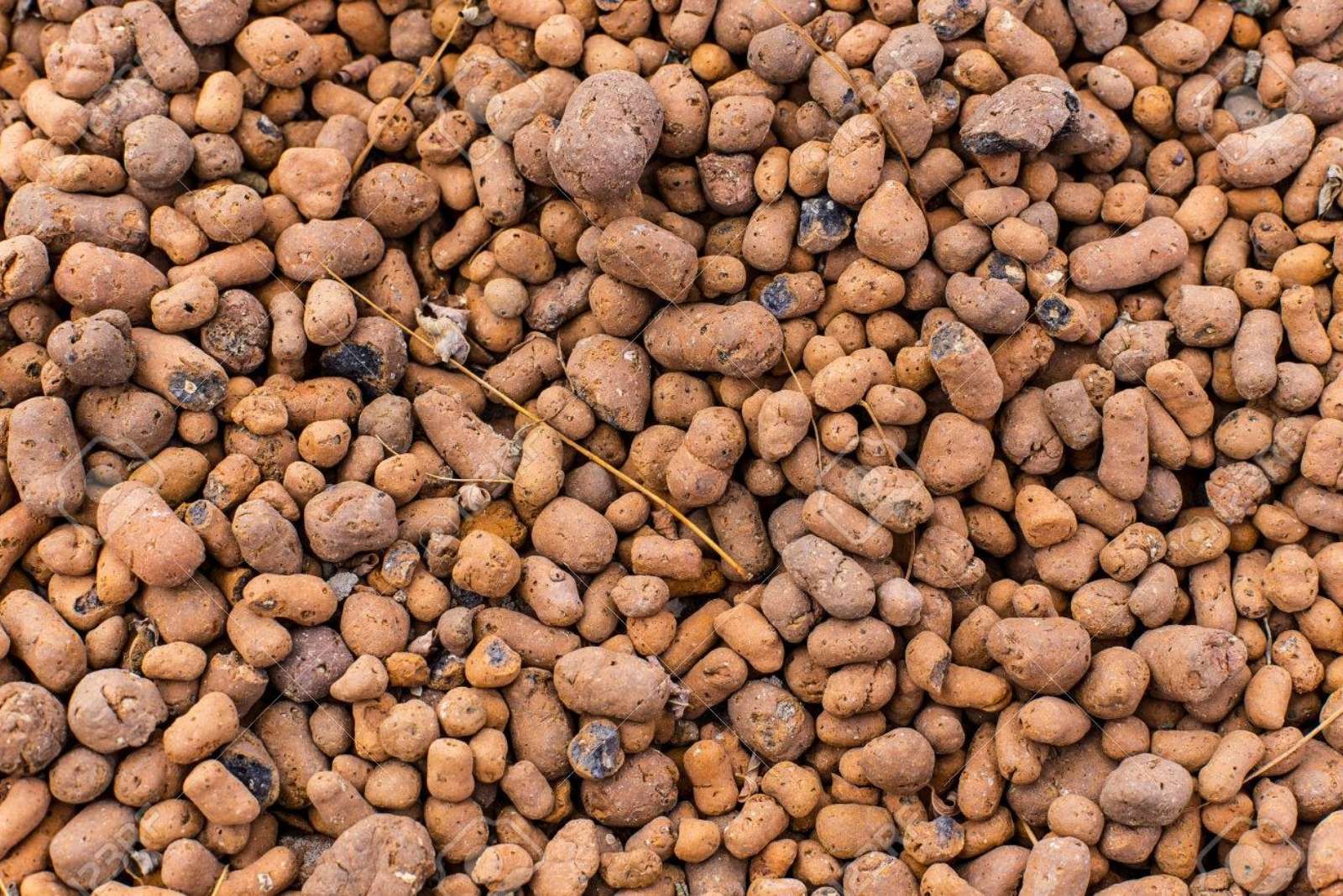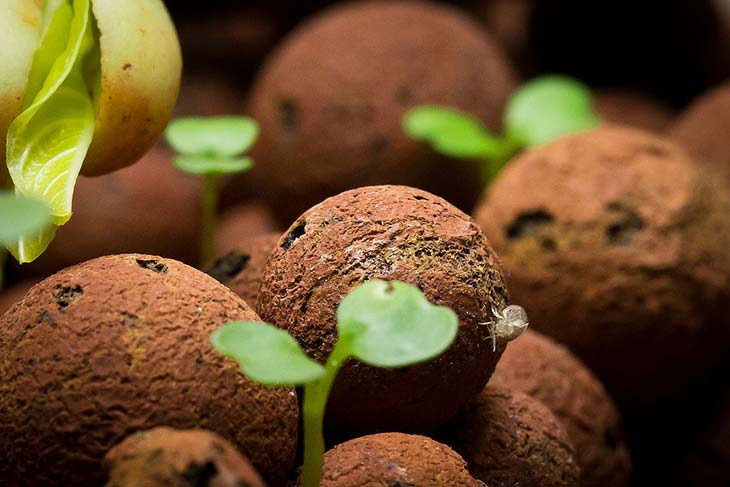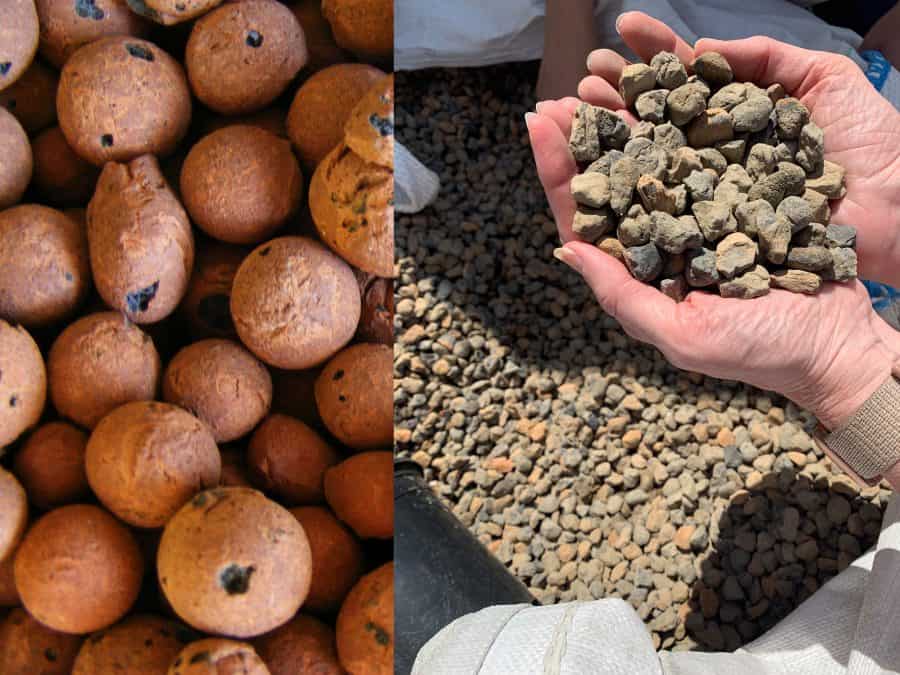Grow Media: Clay Pebbles vs. Grow Stones
Grow media is a type of substrate used in hydroponic systems to support and provide nutrients to plants. It provides space for the roots of the plant while allowing proper drainage and aeration. Common types of grow media include clay pebbles, grow stones, rockwool, coconut coir and vermiculite.
Clay pebbles are small, round pieces made from clay that can be washed and reused multiple times. They are lightweight and can be easily manipulated in order to customize the shape of your hydroponic system. Grow stones on the other hand are larger pieces made from recycled glass.
They offer a better air-to-water ratio than clay pebbles but require more maintenance as they need to be cleaned often. Ultimately, it’s important to select a grow medium that best suits your needs and preferences when setting up your hydroponic system since this will determine how successful you will be at growing healthy plants.
Clay Pebbles vs. Grow Stones
Clay pebbles and grow stones are two popular types of grow medium used in hydroponic systems. Clay pebbles are small, round pieces made from clay that can be washed and reused multiple times. They provide adequate drainage and aeration while being lightweight and easy to manipulate.
On the other hand, grow stones are larger pieces made from recycled glass and offer a better air-to-water ratio than clay pebbles. However, they require more maintenance as they need to be cleaned often.
Ultimately, both grow media have their own advantages and disadvantages which should be weighed according to individual needs when setting up a hydroponic system.
Clay pebbles may be the better choice for gardeners looking for an easy to clean option with good drainage and aeration capabilities whereas aquaponic growers looking for a higher water retention rate would likely benefit from using grow stones.
Advantages of Clay Pebbles
Clay pebbles offer a number of advantages in hydroponic systems. They are lightweight, making them easy to manipulate and move around when setting up or maintaining the system. Additionally, they provide adequate drainage and aeration due to their small size while also being reusable after cleaning.
Clay pebbles can also be used as an inert medium to support plants without providing any nutrients on their own. This allows for greater control over nutrient levels in the system as well as better management of pH levels.
Furthermore, clay pebbles allow more oxygen to reach the roots which can improve plant growth rate and overall health. All these factors make clay pebbles a great option for gardeners looking for an efficient grow medium that is easy to use and maintain.
Light Weight
Lightweight grow media is an increasingly popular choice among hydroponic growers. This type of medium offers several advantages over traditional soil-based methods, including improved aeration and drainage capabilities.
Lightweight grow media is also much easier to manage, transport and store than heavier alternatives. It's even possible to find lightweight options that are specifically designed for indoor use, making them ideal for those with limited space or a desire for convenience.
The main benefit of lightweight grow media is that it provides better oxygen transfer and water circulation to the roots of the plants without sacrificing any of its structural integrity. This helps promote vigorous growth and healthier plants overall.
Lightweight grow media can also be manipulated more easily than heavier substrates to provide better support for root systems. Lastly, by using less commercial material in the system, overall costs can be reduced significantly over time.
Improved Air to Water Ratio
A key factor in successful hydroponic gardening is achieving an optimal air to water ratio for the plants. This can be difficult to achieve when using traditional soil-based methods, as soil tends to retain moisture and restrict airflow. However, lightweight grow media helps ensure that this balance is maintained more easily.
Lightweight grow media such as clay pebbles and grow stones are designed with a number of large pores that allow for ample oxygen exchange while still retaining adequate levels of moisture. Additionally, these substrates are highly porous and have been found to reduce water runoff significantly compared to soil-based systems.
This ensures that the roots of the plants receive oxygen-rich water without becoming overly saturated. As a result, plants grown in lightweight grow media typically experience faster growth rates and higher yields than those grown in traditional soils.
Balanced Water Stream
For hydroponic gardening to be successful, it is important to maintain a balanced water stream that provides the optimal levels of oxygen and additional nutrients for the plants. Clay pebbles and grow stones provide the perfect balance between air and water, allowing for oxygen-rich water flow without excessive runoff.
The large pores in these substrates allow for ample oxygen exchange while still retaining adequate moisture. Additionally, this lightweight grow media prevents water from becoming overly saturated which can lead to root rot and other plant diseases.
The uniform size of clay pebbles or grow stones allows for an even distribution of water throughout the system, providing each plant with an equal amount of nutrients and oxygen. This balanced flow also helps keep pH levels stable, which is essential for proper nutrient uptake in plants.
Furthermore, these substrates are designed to resist compaction over time which can further ensure a consistent flow rate throughout the entire system.
Disadvantages of Clay Pebbles
Although clay pebbles are a popular choice for hydroponic gardening, they can have some drawbacks. The large size of the pebbles can make them difficult to clean and maintain. Additionally, these pebbles tend to be heavier than other substrates which can lead to issues with water flow and drainage.
Clay pebbles are also more susceptible to compaction over time which can further reduce their effectiveness in the system. Lastly, clay pebbles may cause pH levels to fluctuate due to their high alkalinity, making it important to regularly monitor and adjust pH as needed when using these substrates.
Clay Dust Generation
Clay dust generation is a potential risk associated with using clay pebbles in hydroponic gardening. Clay particles can be released into the air when the pebbles are disturbed, which can cause respiratory issues and other health problems.
The dust may also interfere with photosynthesis, resulting in stunted plant growth. It is important to take precautions when working with clay pebbles to reduce the amount of dust generated. Wearing a filter mask is recommended, as well as wetting down the material first before disturbing it.
Additionally, it is important to keep your workspace clean and free from excess dust accumulation by regularly cleaning up any leftover debris and wiping down surfaces. Taking these steps will help you avoid any potential health risks that come with clay dust generation.
Excess Water Drains Away Easily
Grow stones are an excellent alternative to clay pebbles in hydroponic gardening due to their superior drainage capability. Excess water can easily drain away, allowing the root system to breathe and encouraging healthy growth.
The stones' shape helps promote aeration, creating space between them that allows oxygen and nutrients to reach the plant roots more quickly. This helps minimize problems such as overwatering, root rot, and fungal diseases which can occur when plants become oversaturated with water.
Additionally, grow stones do not require wetting before use, so there is no need to worry about dust generation like with clay pebbles. Grow stones are a great option for those looking for a cleaner and easier way to cultivate their plants.
Advantages of Grow Stones
Grow stones are becoming increasingly popular among hydroponic gardeners due to their many advantages over clay pebbles. They provide superior drainage, allowing for excess water to quickly drain away and encouraging healthy root growth.
The shape of the stones helps promote aeration which allows oxygen and nutrients to reach the plant roots more quickly. Furthermore, grow stones do not need wetting before use and so there is no dust generation like with clay pebbles. This makes them a great option for clean and easy cultivation of plants.
Not only do they help prevent problems such as overwatering, root rot, and fungal diseases but they can also add an attractive look to your garden since they come in various colors. Grow stones are an ideal solution for anyone looking for an efficient and aesthetically pleasing way to cultivate their plants!
Option for Ebb and Flow Systems
Ebb and flow systems are a popular option for hydroponic gardeners as they offer an efficient and precise way of controlling water levels. This is achieved by using a timer to fill up the reservoir at regular intervals, allowing the plants access to nutrient-rich water when they need it.
The roots can then take in the nutrients when the level drops back down again, thus avoiding overwatering which can lead to root rot and other issues. Furthermore, due to their automated nature, ebb and flow systems require minimal maintenance - all you have to do is remember to top up your reservoir with fresh water every now and then.
With this type of system, you can ensure that your plants are getting just the right amount of water without having to manually monitor them on a daily basis.
Cubic Foot Measurement
When it comes to hydroponic gardening, understanding the concept of cubic feet is essential. A cubic foot is a measurement of volume that describes the amount of space an object takes up. It's equal to 12 inches in length and width, and 12 inches in height.
When it comes to growing media, this measurement helps you determine how much clean medium you will need for your hydroponic system. For example, if your reservoir measures 1 cubic foot, then you'll need 1 cubic foot of grow media such as clay pebbles or grow stones to fill it up.
Similarly, if your reservoir is larger than 1 cubic foot then you'll need more grow media to accommodate the extra space. Knowing the size of your reservoir will help you make sure that you have enough grow media on hand for your system.
Disadvantages of Grow Stones
Grow stones are a popular choice for hydroponic gardening. They are lightweight, non-degradable, and easy to use. However, there are some disadvantages associated with grow stones that you should be aware of before using them in your system.
First, they can be expensive compared to other forms of grow media such as clay pebbles. In addition, they require more frequent changes because they break down over time due to water and nutrient absorption. This can be costly if you need to replace the common medium on a regular basis.
Finally, grow stones provide less amounts of oxygen to the roots than clay pebbles or other media due to their larger size. This means that plants will not be able to access as much oxygen for healthy growth and development as they would with other grow media types. Therefore, it is important to monitor root health when using grow stones in your hydroponic system.
Harder to Control Nutrient Solution in Aquaponic Media Bed Systems
Aquaponic media bed systems are becoming increasingly popular for their ability to produce high-quality, chemical-free produce. However, managing the nutrient solution in these systems can be harder to control than other hydroponic media types. The reason for this is because of the nature of the organic matter that makes up the media bed.
Organic materials such as peat moss, gravel, and clay pellets can create anaerobic zones which allow beneficial bacteria to thrive. Unfortunately, this also means that nutrients can become trapped and accumulate over time in these areas creating an imbalance in the nutrient solution.
To combat this issue, it is important to regularly monitor pH and nutrient levels in your system and top off with fresh water as needed. It is also beneficial to add additional aeration sources such as air pumps or bubbler stones throughout your system to keep oxygen levels high and prevent anaerobic zones from forming.
Uses for Each Type of Media
Clay pebbles and grow stones are two popular types of media used in hydroponic systems. Each type of media has its own unique characteristics that make it useful for specific applications.
Clay pebbles are made from fired clay and are usually light in color. They provide excellent air-to-water ratios, allowing for optimal oxygenation of the root zone. The adequate surface area also makes them ideal for cultures with high levels of nutrient solution because the roots can absorb more nutrients quickly. Clay pebbles are also highly durable, making them a great choice for long-term systems.
Grow stones are small, round stones that are usually made from recycled glass or rock materials. They have an excellent capacity for water retention, which is ideal for short-term hydroponic systems that require frequent watering. Grow stones also promote strong root growth due to their irregular shape and porous structure which encourages healthy root development.
Both clay pebbles and grow stones have their own unique benefits and can be used together in a hydroponic system to maximize its efficiency. Ultimately, choosing the right type of media will depend on the application you intend to use it for and your desired level of maintenance.











